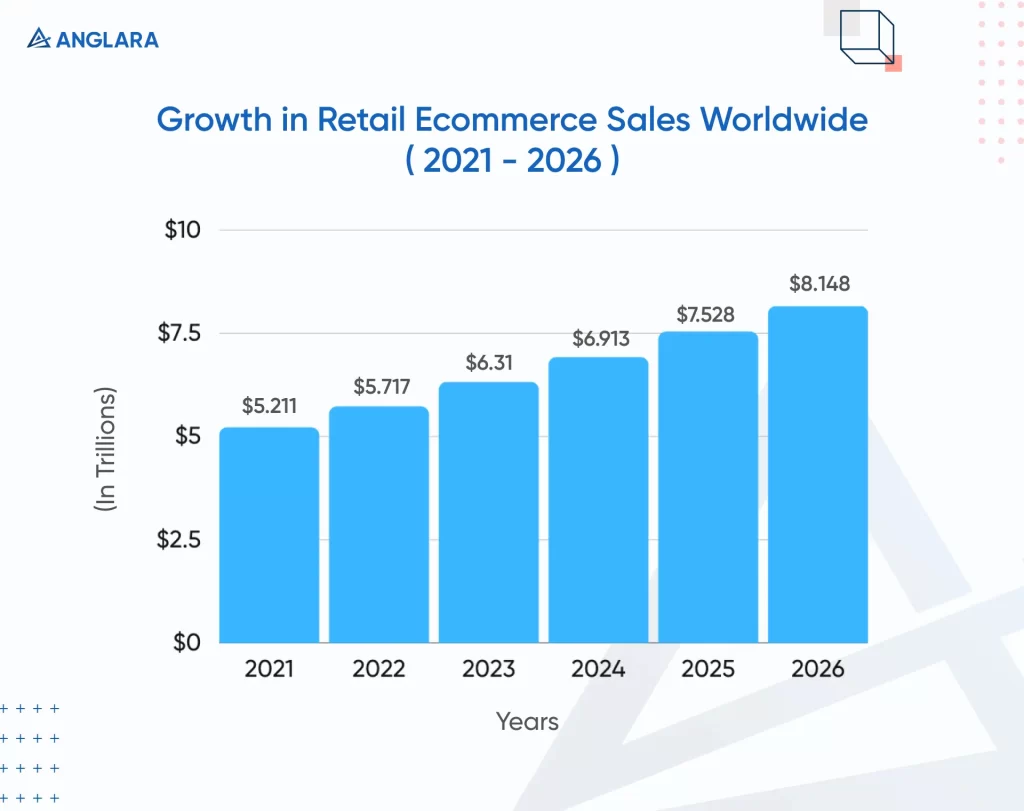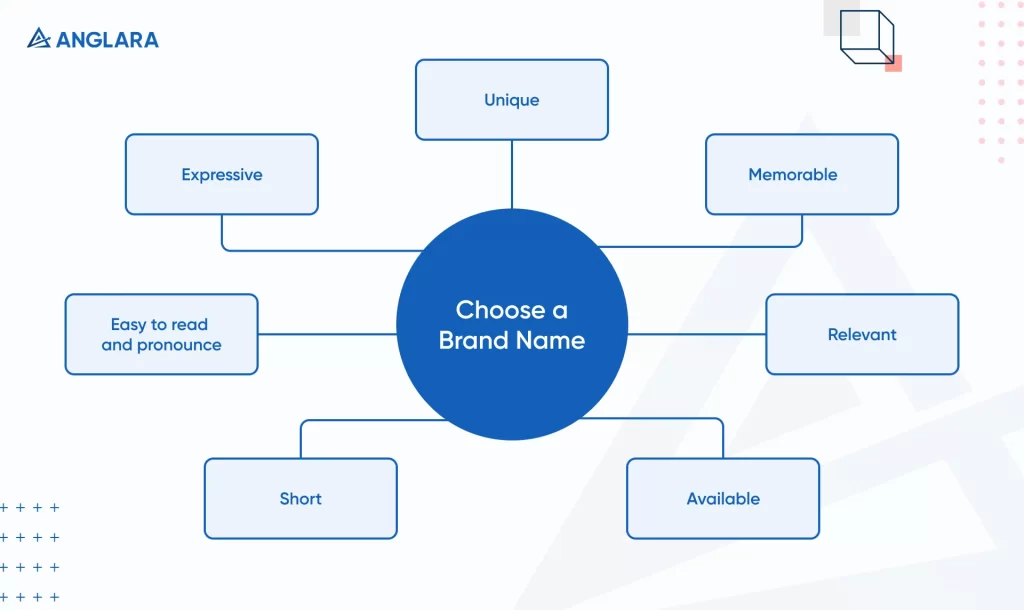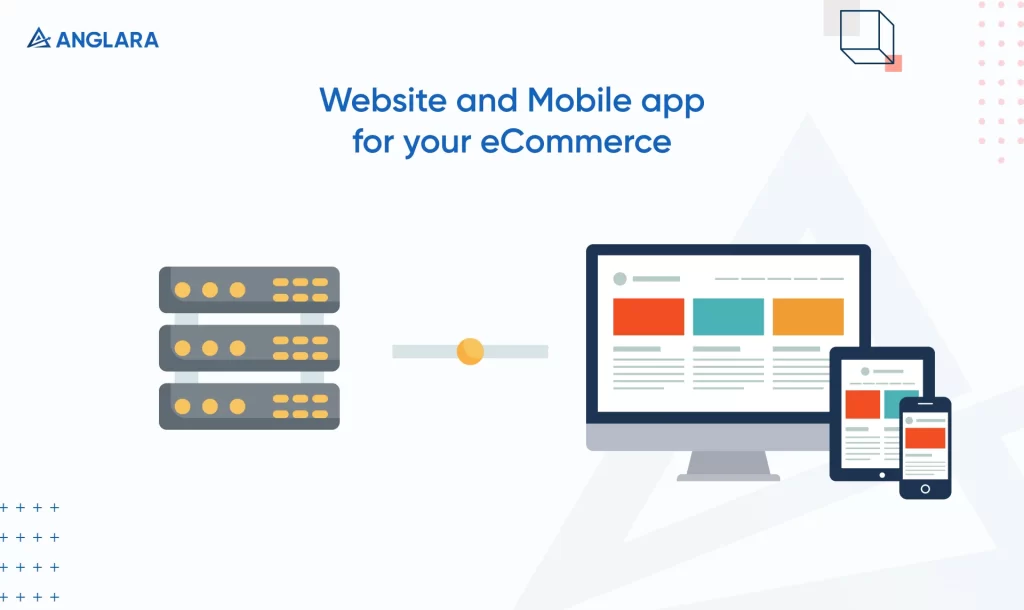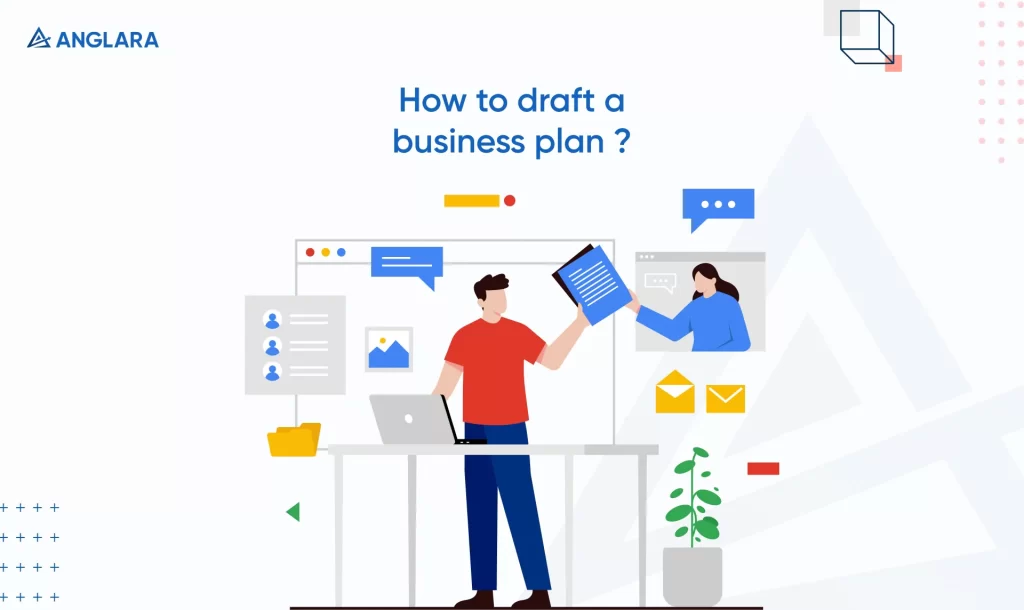How to start an eCommerce business in 2024
The year 2023 provides great opportunities to step into the eCommerce market as the eCommerce trends 2023 show online retail sales to go up by 10.4%. The simple reason behind it is more and more customers by the day are relying on the Internet to make purchases.
In fact, experts even assert that in 2023 20.8% of overall retail purchases will happen online and 24% by 2026! So why not bag the opportunity to start an eCommerce business in 2023 and jump on the bandwagon to make more profits?
We know that building a strong brand online will need guidance. You can treat this comprehensive guide as your eCommerce 101 how to start selling online. By the time you’re done reading this, you’ll know what to sell, where to sell it, and how to sell it.
Let’s start with the first, most important, step in laying the foundation of a successful online business– choosing a product to sell online!
Step 1 – what to sell?
The eCommerce market is going to be worth $6.3 trillion in 2023 and $8.1 trillion by 2026. Given the magnanimous figures, you can estimate the degree of competition. To build an eCommerce success story, you need to know what to sell, target a niche market, and understand the market and competition in it.
Choosing what to sell is often the most challenging part of eCommerce for newcomers. Because you don’t know if there’s scope for generating good figures with a certain business idea. Numerous strategies exist for identifying the products/services that will perform well in the current market. But a great way to start is by identifying industries that thrive in eCommerce.
Identify industries with potential
There are several industries that you can step into, be it a service-based industry or product based. There are certain industries that particularly thrive in the landscape of eCommerce in 2023, and you want to choose your products or services in those markets.
For example, fashion and apparel are always a hit with an anticipated market size of $821.19 billion in 2023. However, it’s also a very saturated industry.
Another industry that sells greatly is beauty and personal care, with a market of $571.10 billion in 2023. However, there are many kinds of products you can offer.
On the service side, the food delivery market was worth $50.70 billion in 2021, and it is expected to expand at 18.7% CAGR between 2022 to 2030. Although, even they have some very strong players monopolizing it.
Once you’ve narrowed down the industries that interest you and do well in eCommerce, we can move on to the next step of choosing products that will sell– narrow it down.
Find niche
Say you’re preparing to start a clothing brand online, but there are just so many things that you can sell in so many different styles, fabrics, etc. It is important that you narrow down the types of products you’ll offer by finding a niche. This could be done in more than a few ways, for example:
- Narrowing down your target audience defined by a specific age, location, and other demographics
- Choosing a specific quality and material
- Offering a specific style and type of apparel, such as sportswear or street style
- Defining it by one of your values, such as eco-friendly or recycled
Finding a niche is important because:
- you’ll offer what is more likely to sell, instead of
- offering all the things amongst which only a few may sell.
It will help you define your unique selling proposition (USP) later in the business strategy that sets you apart from the competition. While you’ll cater to a smaller group of people, you’ll be more likely to:
- nail down your sales and marketing efforts,
- And optimize your customer acquisition and retention strategies
Picking a specific niche will specifically help you with our next step of starting an eCommerce business– competitive research.
Step 2 – competitive research
Once you’ve picked your niche and are aware of what kind of products you’ll sell, you’ll have to figure out your biggest competitors in the market. By simply searching the type of products you wish to offer on Google, you’ll be presented with the top-performing businesses on the first page.
By digging through their website and social media platforms, competitive research can help you learn more about their business plan, product offering, and marketing strategy. You will have to pay attention to their strengths and weaknesses. Doing so will help you:
- price your products right,
- sharpen your own sales and marketing strategy,
- get ahead of the competition,
- and in overcoming common challenges in eCommerce startups.
There are some more tools that you can leverage to carry out a thorough competitive analysis, these are:
- SEM Rush and Ahrefs can help you determine top-ranking businesses on search engines internationally.
- Similarweb and BuzSumo can help you track your competitor’s online footprint and activities.
- Subscribe to your competitor’s emails and newsletter, and it will give you an insight into deals and offers, that will help you understand how to price your products.
Step 3 – choose a business model
Now that you’ve done research into your competitors, you should’ve gotten an idea of how they run their businesses. It’s important that you too figure out how you want to run your business by settling on a business model. It will dictate the means through which your products are manufactured and distributed.
Selecting a business model depends on your budget, audience, product type, and competition. So, if you’re thinking of building a strong brand online of apparel, the most common types of business models in eCommerce for you will be:
- Dropshipping – You don’t need to invest in the inventory because you partner with a third-party provider of products. When you get an order, you pass it on to them and they will deliver it to the customer.
- Print-on-demand (POD) – Similar to dropshipping, this option is great for offering customised products. You integrate a POD partner, such as Printful, Printify, or CustomCat, with your online store. The partner puts your designs on white-label products and manufactures only when someone places an order in your store. They also deliver it to their doorstep. Again, low investment and minimum management.
- Wholesaling – You get bulk products from manufacturers at low prices and offer them to the customers online at a profit. Here, you get larger profit margins for buying and selling in bulk but it requires a bigger investment and management of inventory.
- Private label – In this model, you’ll get products manufactured with clear specifications to customise them for your brand. You’ll be responsible for the material used in manufacturing, holding and maintaining an inventory, labelling, packaging, and shipping. This is a high-investment and management-demanding model, suitable for businesses aiming to build their brand!
Check out different kinds of business models that are relevant to what you offer and choose one that fits your needs. Once you decide on your business model, you’ll have to define your brand identity by choosing a name for your business. Let’s see what you need to do for that.
Step 4 – choose a brand name
Your brand or company name is the initial point of contact with a consumer in an online business, and it’ll make the first impression too. You can’t mess it up with an unprofessional or irrelevant name. The name you choose for your business should have the following qualities:
- Unique, memorable, and resonating
- Relevant to what you sell
- Available in the market
- Short and easy to read and pronounce
- Expresses your brand vision and mission.
The legal name that you’ll register your business with doesn’t need to be the name of your website, but it’s better to keep it that way. It will help you with search engine visibility along with other things you’ll do to optimise your content for good SEO.
The best way to come up with a good name for your business is to get creative, make a list of names, and then narrow it down. Once you’re fixated on a name for your brand, we can move on to an important step of starting an eCommerce business– registering it!
Step 5 – registering your business
By formalizing the business via registration, you may establish credibility with your clientele and expand your opportunities for growth. You will finalise the structure of your company during the registration process. Your DBA or company name registration will occur simultaneously. You can register your business as:
- single proprietorship,
- partnership,
- Limited Liability Company (LLC),
- or S-Corp/C-Corp.
Registration must be done with your operating country’s government or local agencies. Depending on where you are, you’ll need to acquire a unique identifier, such as an employer identification number (EIN) in the United States or Permanent Account Number (PAN) in India.
Having your business officially registered makes it a legal entity and can assist you declare your income when it’s time for taxes. With your registration number, you’ll get additional benefits, such as:
- Perpetual succession until dissolved legally
- Limited liability of members toward debt
- Ability to issue shares at some point
- Own business property
- Fund borrowing capacity
- and more
In order to register your business with the government, you will need a business plan laying out in detail your online business’ following information:
- Your mission,
- objectives,
- strategy to achieve them,
- and finances.
Writing a business plan can be difficult, but it’s essential for every business. If you don’t know how to draft the document, don’t worry! We’ve added a bonus section at the end of this article to help you with it!
After registering your business, you’ve officially become a business owner! Now it’s time to open an online shop that displays and sells your product or services. In order to build your eCommerce website or app, you’ll need to choose an eCommerce platform.
Step 6 – choose an eCommerce platform
There are several e-commerce platforms available in the market, some are over-the-counter SaaS platforms, like Shopify and BigCommerce, while others are more customizable open-source options, like WooCommerce and Magento.
One of the most advanced ways to set up your online store is through custom development, which can accommodate all kinds of personalized features, perfect for a business striving to build a brand.
There are several benefits of custom e-commerce solutions that commercial platforms can’t provide. However, choosing the right platform will depend on your needs, budget, and your web developer’s capabilities. It is one of the most important decisions you’ll make in the business, so you must not take it lightly.
Want to compare the best eCommerce platforms available to open the door of your eCommerce business? Read our article Best Platforms to Develop an eCommerce App 2023.
Once you finalize an eCommerce platform, you’re ready to design your storefront and build online solutions to open the doors of your store to the world.
Step 7 – develop a website and mobile app for your eCommerce business
Depending on the eCommerce platform you choose, you’ll have to build a website with great UX. Based on the experience and technical expertise of your web developer, you should aim to build an aesthetically pleasing, feature-rich storefront. But if you want to bring in new customers and retain them, make sure that you provide a great shopping experience.
Tip: Ensure that your developer avoids the common things that increase bad UX for the website and uses our 10-Point Checklist For Great User Experience For Websites.
As 7 billion people use smartphones, experts predict that in 2023, smartphone sales will reach a whopping $511.8 billion! In addition to a great website, you must also have a mobile app for your store to not miss out on mobile commerce opportunities.
Choose an eCommerce app development company that has a complete experience in the deployment of successful digital solutions as you want. The right agency should have a team of experts with the know-how and the required tech stack to be able to build a scaleable feature-rich mobile application that:
- suits the needs of your business
- provides top-notch user experience to your customers.
Wondering what the process of eCommerce mobile app development looks like? Find out in our guide eCommerce Mobile App Development 101: Everything you need to know.
Bonus – how to draft a business plan
A business plan is a written document that describes your online business objectives and strategies for reaching those objectives. A business plan will be required for registering your business. But having a well-thought-out strategy in place can also help keep your business on track. It demonstrates that you have thought through potential roadblocks, researched the market thoroughly, and have a thorough understanding of your sector, which will be attractive to potential investors and partners in business.
As promised earlier, we’re here to help you guide through it so you can draft one for your business. While there is no set template for a business strategy, normally one would discuss the following:
Executive summary
The executive summary will provide a concise description of your company that should not exceed two pages. The goal of the executive summary is to brief interested parties on the contents of the full business plan. Finish writing the remainder of the paper first, then use it as a springboard for your summary.
Business description
Describe the services you provide and what sets your business apart. The business description will include the following details to determine the company’s focus:
- The function of your business
- Problems and the solution it offers
- Business model – Describe your target market and the method you’ll be using to reach them.
- Mission/Vision
- Values
Product/Service description
You may now go on to the meatier parts of your business plan once you’ve introduced your company and its mission. It’s time to introduce what you sell, why, and how. This portion should include details about the following things:
- Products/services you offer
- Its cost
- Your methods to source/manufacture
- Delivering methods
- Declaration of intellectual property, such as patents, copyrights, or trademarks.
Market research
Since you’ve already carried out a competitive analysis, you should already have details for this part of the business plan. In the market research portion, you need to uncover the conditions under which the business operates. This includes the following details:
- Details of your target audience – a clear description of an ideal customer
- Size of the market
- Your biggest competitors and businesses offering the same/similar products
- The USP that sets you apart
- Advantages, opportunities, and disadvantages in the market due to competition
Marketing plan
Having wonderful products/services to offer is great, but it means nothing if nobody knows about them. A marketing plan will demonstrate how you’ll reach the audience you target, bring them to you, and sell them your products to generate revenue. Include the following for a thorough marketing plan:
- An analysis of strengths, weakness, opportunities, and threats (SWOT).
- Goals for marketing business
- Method to achieve those goals
- Marketing channels you’ll utilise
- Customer acquisition and retention strategies you plan to use, such as:
- Search engine optimisation (SEO)
- Leveraging social media for eCommerce success,
- Newsletter and email marketing strategies,
- Influencer marketing, etc.
- Key Performance Indicators (KPIs) or metrics to measure how you inch closer to your goals
Financials
Lastly, your business plan should give a clear overview of your financials. Doing a bit of math will help you understand how much you’ll spend, how much you’ll earn, and what will be the profit margin. This might provide you insight into your company’s prospective financial stability. You can better plan for the future and, if necessary, seek out the necessary financing. Your financial portion will include the following:
- Historical revenue
- Forecasted revenue
- Investments Made
- Debts and their type
- Profit and loss statement
- Expenses
- A comparison of budget vs. actuals
A pre-revenue business might not have all the figures mentioned above. In that case, the financials will include the following:
- Projected revenue
- Information for funding
- Costs that you expect
That’s it! By now you should be well-equipped to start your very own online store in 2023. In order to prepare for future success in building a strong brand online, make sure to choose the right partners to work with, be it your suppliers/manufacturers or the tech team you employ for web and app development.
How can anglara help?
Looking for a partner that can help you develop top-notch eCommerce solutions to take your business to the next level? Look no further as Anglara’s team of seasoned experts have accumulated extensive experience in 5 years of developing custom apps and websites for our customers that are:
- successfully deployed,
- feature-rich,
- aesthetically pleasing,
- and optimised for high performance.
Now, we’re ready to put our skills to work for you too with our cutting-edge technology and unparalleled support to help you create the best eCommerce platforms that deliver an incredible user experience and drive sales like never before.
We understand that choosing the right eCommerce platform and skilled experts to develop your digital solutions can be a daunting task. We are here to help you make the right decision by guiding you through any questions you may have and clarifying your confusion. Unlock the power of our expertise with a complimentary 30-minute consultation call! Simply fill up the form and we’ll be thrilled to get in touch with you! Take the first step towards an exciting future with Anglara now!
FAQ
What are the steps to getting started with e-commerce?
Starting an eCommerce business in 2023 is a simple 8-step process as outlined below:
1 – Decide What to Sell
- Identify Industries With Potential
- Find Niche
2 – Carry out a Competitive Research
3 – Choose a business model
4 – Choose a brand name
5 – Registering your business
6 – Create a business plan
- Executive Summary
- Business Description
- Product/Service Description
- Market Research
- Marketing Plan
- Financials
7 – Choose an eCommerce platform
8 – Develop a website and mobile app For your eCommerce business
How do i start an e-commerce business with no money?
If you don’t have a lot of money or would like to start a business with zero investment, you may open an online business by investigating print-on-demand or drop shipping business models. With these types of arrangements, you pay the manufacturer for products only after buyers have placed an order. You will also save money on having to maintain your own storage space for inventory.





